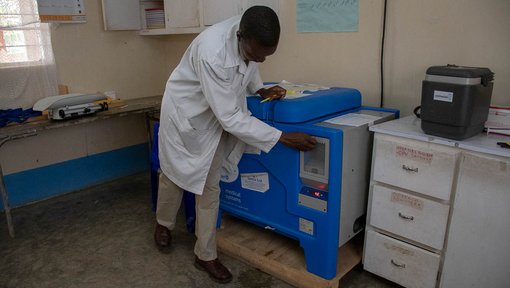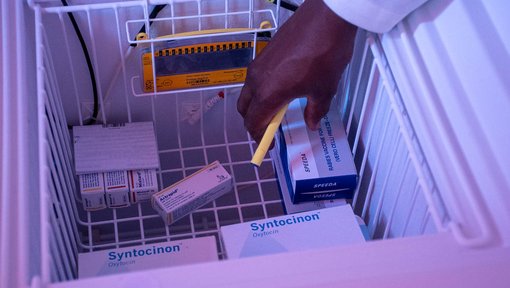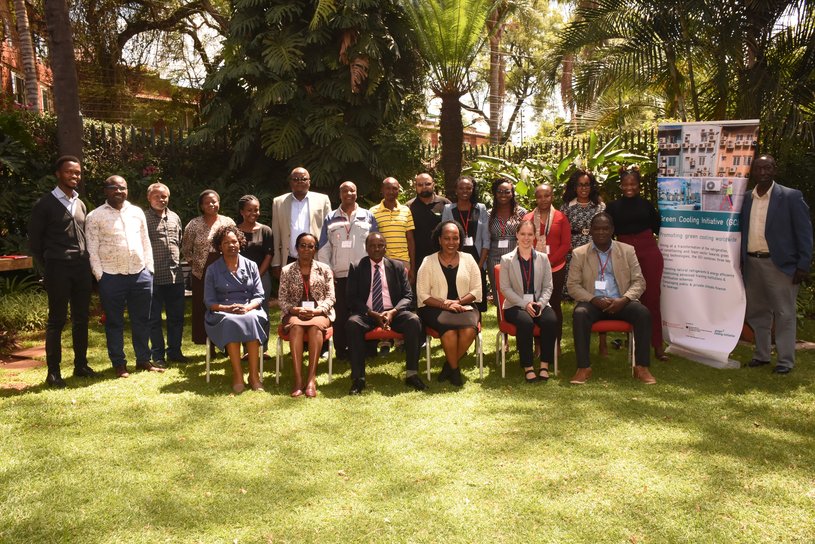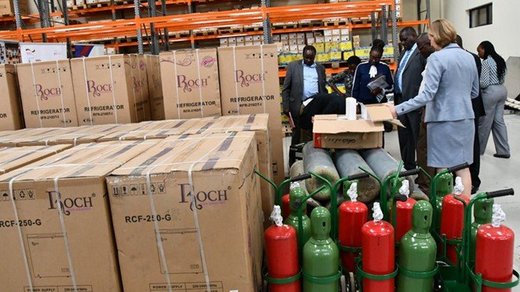On May 11 the Kick Off workshop of the GCI III was held in Kenya. This session served to discuss with stakeholders the objectives of the new phase of the project, which aims to put Kenya at the forefront of green cooling technologies in East and Central Africa.
GIZ Proklima in collaboration with the National Ozone Unit (NOU) of the Ministry of Environment and Forestry Kenya organized a one-day Kick Off workshop for the GCI III project at FairView Hotel Nairobi Kenya. The workshop focused on presenting the GCI III objectives to key stakeholders for discussion with the aim to jointly agree on project plans, have good understanding of the roles and responsibilities of the relevant stakeholders/ organization/persons the project intends to work with during the project term.
The meeting was attended by stakeholders from public and private institutions. Thematic areas addressed were as follows: measures on policy, standards, finance, technology transfer, Qualification, Certification and Registration (QCR). The participants agreed that QCR for Refrigeration and Air Conditioning (RAC) technicians will bring an aspect of continuous training, make levels of knowledge of technicians measurable and give Kenya an overview of trained workers and their certification status.
Mr. Kirui (NOU Coordinator) gave the opening remarks on behalf of the Director Multilateral Environmental Agreements (MEAs), Ministry of Environment and Forestry. During the opening session he mentioned the collaborative work that has taken place over the years with the Green Cooling Initiative in Kenya. Ms. Ines Josten of GIZ Proklima gave an overview of the project’s global approach while Ms. Juliet Cheruto also from GIZ presented the country proposed activities under the GCI III for the project duration.
During the workshop, participants were divided into two working groups for an in-depth discussion. Group 1 looked at measures on policy, standards, finance and technology transfer while Group 2 worked on the Qualification, Certification and Registration (QCR)
Mr. Marindanyi Kirui's concluding remarks emphasized once again the importance of Kenya being at the leading edge of Green Cooling technologies in the region.
GCI in Kenya
GIZ Proklima through the Green Cooling Initiative, implemented on behalf of the German Federal Ministry for Environment, Nature Conservation, Nuclear Safety and Consumer Protection, has been working with the National Ozone Unit under the Ministry of Environment and Forestry on policy advice, technology transfer and capacity building in Kenya since 2012. This country is considered the backbone of East and Central Africa, therefore it is expected to be one of the pioneers of green refrigeration technologies in the region.





